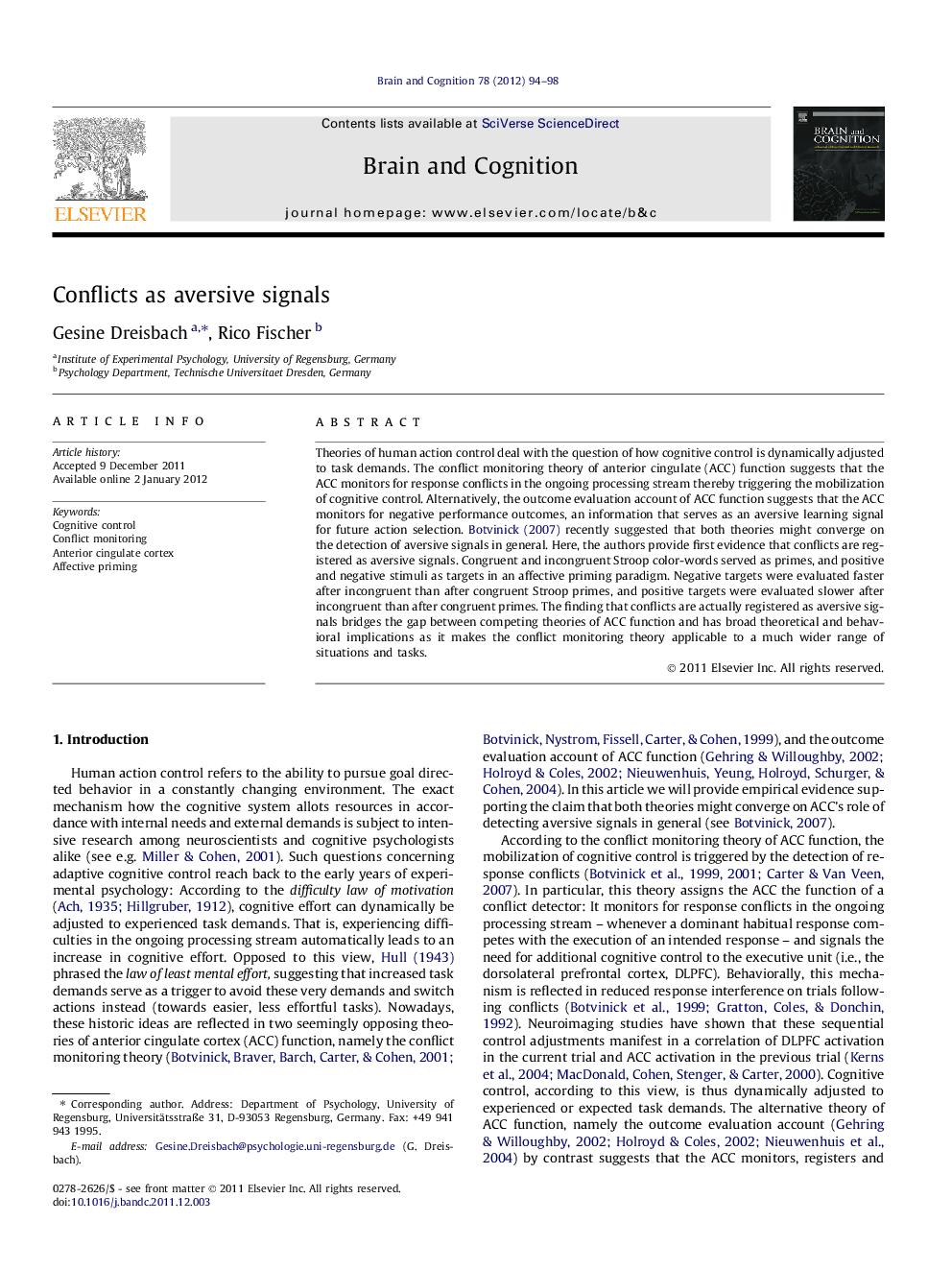| Article ID | Journal | Published Year | Pages | File Type |
|---|---|---|---|---|
| 924116 | Brain and Cognition | 2012 | 5 Pages |
Theories of human action control deal with the question of how cognitive control is dynamically adjusted to task demands. The conflict monitoring theory of anterior cingulate (ACC) function suggests that the ACC monitors for response conflicts in the ongoing processing stream thereby triggering the mobilization of cognitive control. Alternatively, the outcome evaluation account of ACC function suggests that the ACC monitors for negative performance outcomes, an information that serves as an aversive learning signal for future action selection. Botvinick (2007) recently suggested that both theories might converge on the detection of aversive signals in general. Here, the authors provide first evidence that conflicts are registered as aversive signals. Congruent and incongruent Stroop color-words served as primes, and positive and negative stimuli as targets in an affective priming paradigm. Negative targets were evaluated faster after incongruent than after congruent Stroop primes, and positive targets were evaluated slower after incongruent than after congruent primes. The finding that conflicts are actually registered as aversive signals bridges the gap between competing theories of ACC function and has broad theoretical and behavioral implications as it makes the conflict monitoring theory applicable to a much wider range of situations and tasks.
► We present Stroop color words as primes, and positive and negative stimuli as targets. ► Negative stimuli are answered faster after incongruent Stroop primes. ► Positive stimuli are answered faster after congruent Stroop primes. ► Conflicts are registered as aversive signals.
